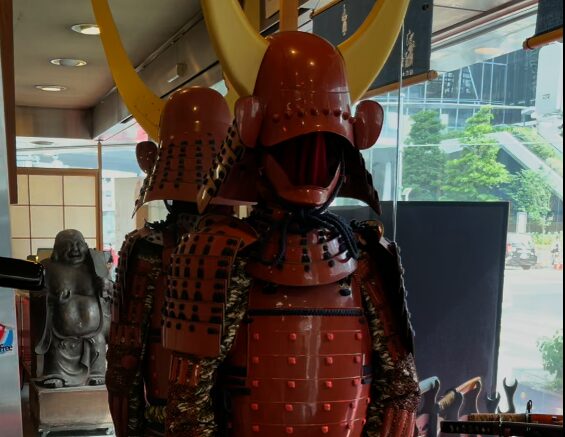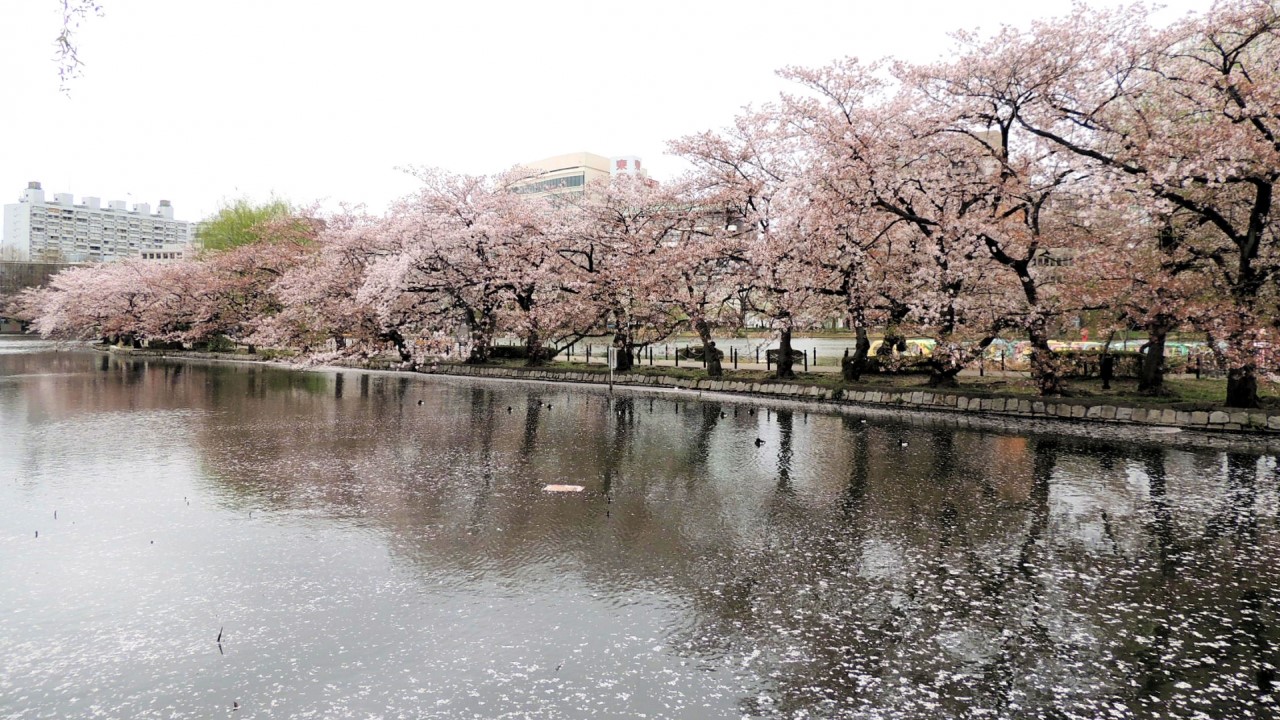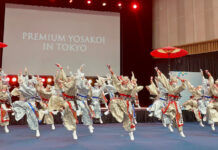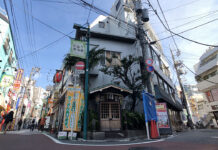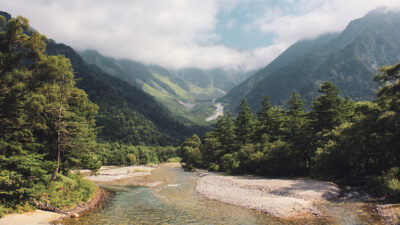Akihabara & Kanda 秋葉原・神田
After a shopping spree at Akihabara, why not head to Kanda for some Japanese sweet treats and see how tradition is redefined and incorporated in everyday life in Tokyo.
Akihabara is deserving of its title of “Japan’s pop culture mecca,” hands down. However, just a few blocks from the station, away from the anime-goods stores and cute shops, you’ll discover a whole different side of this lively district. Follow us as we step off the beaten path, explore the area’s history and witness how it has transformed into the Akihabara of today.
Start from JR Akihabara Station Electric Town Entrance
 Akihabara Electric Town
Akihabara Electric Town
JR秋葉原駅 電気街口
 Akihabara’s Electric Town — practically sacred ground for otakus — is located right outside of the station, surrounded by quirky, colorful billboards and stores selling pop culture goods. Though it would be easy enough to spend the day shopping in the labyrinth that is Electric Town, just a short 10-minute walk away heading toward Kanda Myojinshita intersection, the mood completely switches gears to one of a more traditional, nostalgic Japanese atmosphere.
Akihabara’s Electric Town — practically sacred ground for otakus — is located right outside of the station, surrounded by quirky, colorful billboards and stores selling pop culture goods. Though it would be easy enough to spend the day shopping in the labyrinth that is Electric Town, just a short 10-minute walk away heading toward Kanda Myojinshita intersection, the mood completely switches gears to one of a more traditional, nostalgic Japanese atmosphere.
 Myojinshita Area
Myojinshita Area
明神下
A neighborhood that flourished thanks to its proximity to Kanda Myojin Shrine, this area is home to traditional restaurants and confectionery stores that boast long histories. There are also quite a number of hidden shops nestled away in alleys for you to explore. As you make your way further into the area, be prepared to encounter a stairway dubbed Otokozaka, a name combining the words “man” and “slope” in Japanese, leading to the Kanda Myojin Shrine.
 Kanda Myojin Shrine
Kanda Myojin Shrine
神田明神
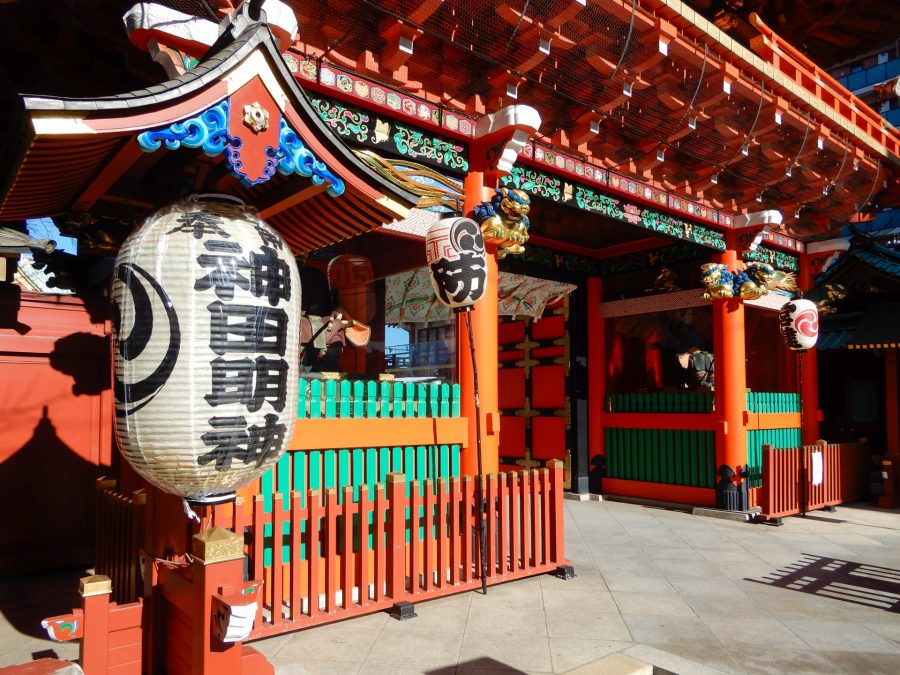 The history of Kanda Myojin Shrine can be traced back 1,300 years. Over that time, people of all ages, ranks, and castes have paid their respects at this shrine, including members of the Edo shogunate themselves. Today, it’s known as a power spot — somewhere to revitalize and reinvigorate the soul — and is quite popular with otaku due to the shrine having been featured in a popular anime series.
The history of Kanda Myojin Shrine can be traced back 1,300 years. Over that time, people of all ages, ranks, and castes have paid their respects at this shrine, including members of the Edo shogunate themselves. Today, it’s known as a power spot — somewhere to revitalize and reinvigorate the soul — and is quite popular with otaku due to the shrine having been featured in a popular anime series.
Kanda Myojin Shrine
Hours: Daily 9:00 am – 4:00 pm
Address: 2-16-2 Soto-Kanda, Chiyoda, Tokyo
Website: www.kandamyoujin.or.jp
 Yushima-seido Temple
Yushima-seido Temple
湯島聖堂
 This extraordinary temple, located close to the Kanda Myojin Shrine, is surrounded by a forest of trees and roofed mud walls, its beauty once captured the hearts of many renowned ukiyo-e artists like Katsushika Hokusai and Utagawa Hiroshige. Built in the Chinese style out of respect for the doctrine of Confucianism, the temple formerly served as a school where young scholars cultivated their minds back during the Edo period.
This extraordinary temple, located close to the Kanda Myojin Shrine, is surrounded by a forest of trees and roofed mud walls, its beauty once captured the hearts of many renowned ukiyo-e artists like Katsushika Hokusai and Utagawa Hiroshige. Built in the Chinese style out of respect for the doctrine of Confucianism, the temple formerly served as a school where young scholars cultivated their minds back during the Edo period.
Yushima-seido Temple
Hours: Daily 9:30 am – 5:00 pm
Address: 1-4-25 Yushima, Bunkyo, Tokyo
Fee: No charge
 Holy Resurrection Cathedral
Holy Resurrection Cathedral 東京復活大聖堂「ニコライ堂」
東京復活大聖堂「ニコライ堂」
The main cathedral of the Japanese Orthodox Church, hidden among the surrounding tall buildings, is visually distinct with its large green domes. This nationally designated important cultural property is a symbol of Russo-Japanese relations that has stood since the Meiji period. Stop by and capture a great shot of Nikolai Cathedral and a view out over Akihabara from Sola City in Ochanomizu.
Russian Orthodox Nikolai Cathedral
Hours: (April – September) 1:00 pm – 4:00 pm; (October – March) 1:00 pm – 3:30 pm
Website: https://nikolaido.org/en/
 The Old Manseibashi Station
The Old Manseibashi Station
旧万世橋駅
 Closed in 1943, this once bustling train station along the Chuo Line — built back in the Meiji period — was famous for both its redbrick construction and proximity to the Manseibashi Bridge. Now a shopping complex under the bridge, this redeveloped historical spot has been given new life in the bustling commercial district of Akihabara.
Closed in 1943, this once bustling train station along the Chuo Line — built back in the Meiji period — was famous for both its redbrick construction and proximity to the Manseibashi Bridge. Now a shopping complex under the bridge, this redeveloped historical spot has been given new life in the bustling commercial district of Akihabara.
If you enjoyed this article, you may also enjoy:
Another 3hr Trip – Shibuya
A Day In Sumida Ward: Following in the Footsteps of Hokusai
Another 3hr Trip – Ueno
Another 3hr Trip – Nightlife in Tokyo
 0
0


 Akihabara Electric Town
Akihabara Electric Town Myojinshita Area
Myojinshita Area  Kanda Myojin Shrine
Kanda Myojin Shrine Yushima-seido Temple
Yushima-seido Temple Holy Resurrection Cathedral
Holy Resurrection Cathedral 東京復活大聖堂「ニコライ堂」
東京復活大聖堂「ニコライ堂」 The Old Manseibashi Station
The Old Manseibashi Station